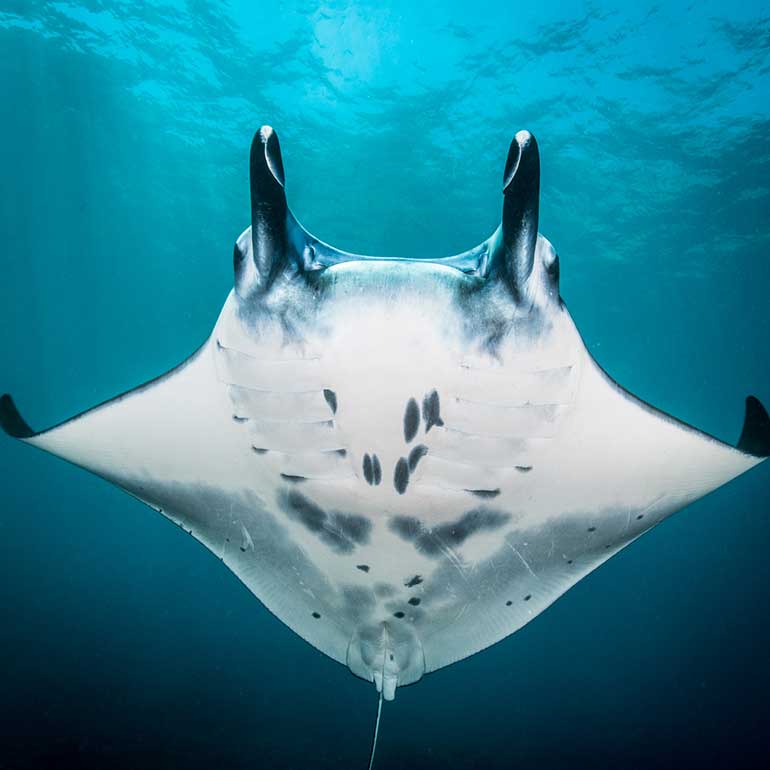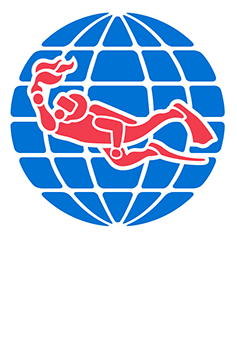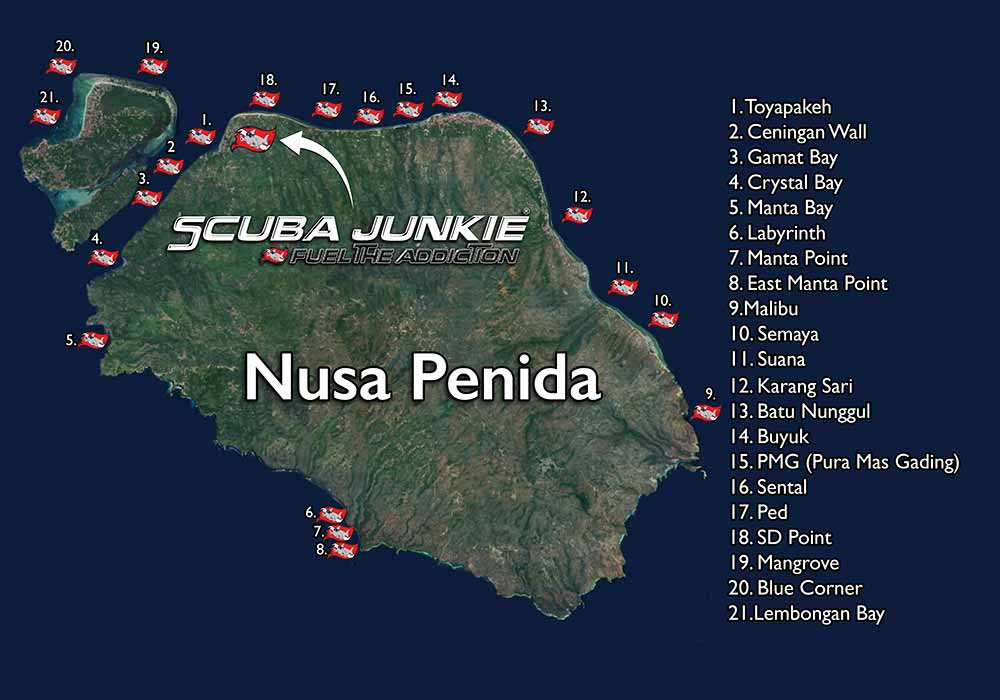


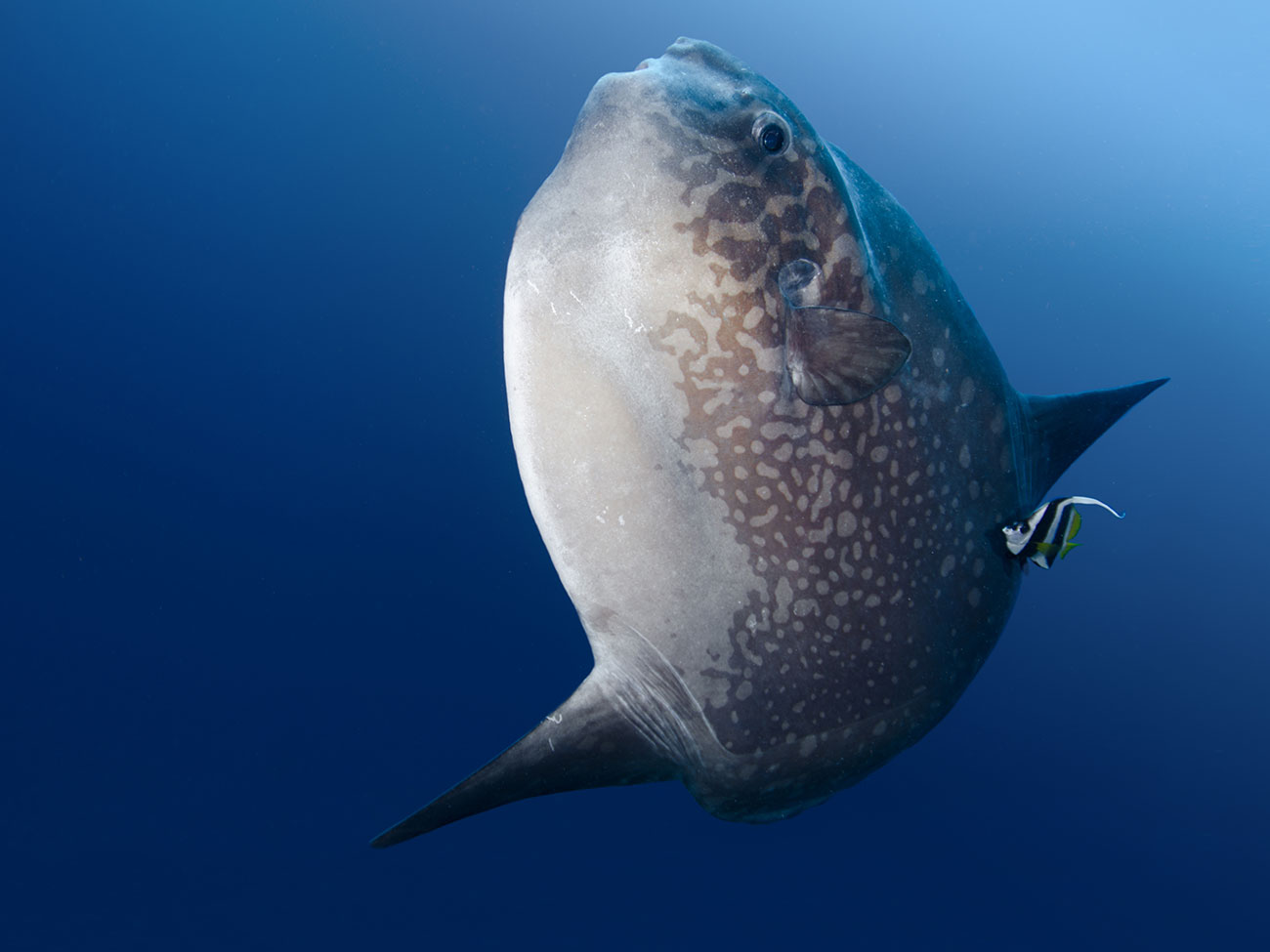
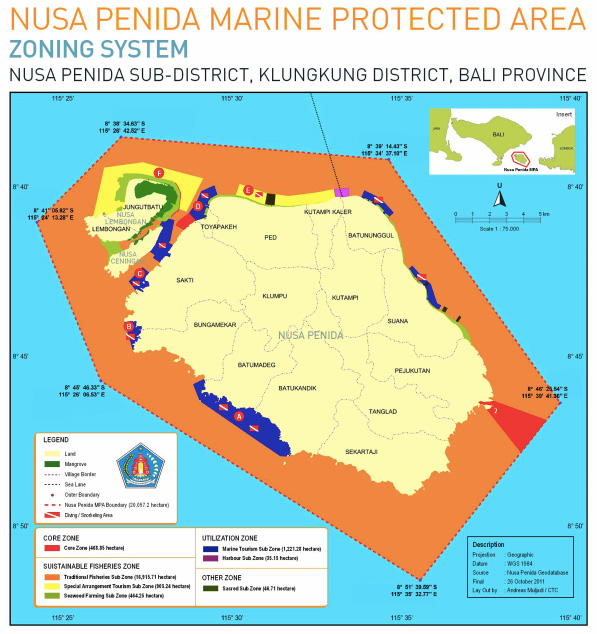
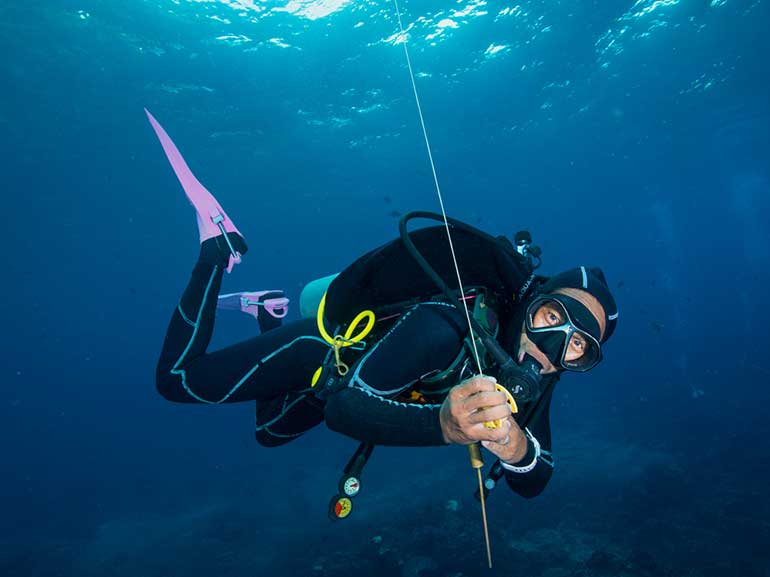
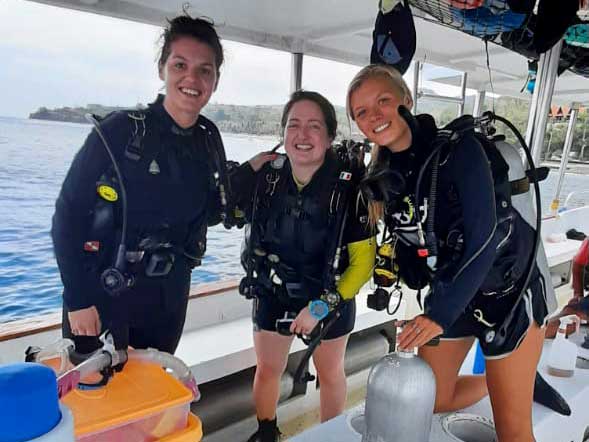
Mantas are around during all months of the year and we can visit the dive sites that they call home when the swells aren't too big. We'll aim to get you to the manta sites during your trip as long as the conditions allow. Visibility at the manta sites is generally best in the low season (January to march) and the peak mating season for manta rays is usually May. It's possible to see pregnant females and mating trains during all months of the year though.
Some mantas are very curious and others are shy - We will always give you a detailed Code of Conduct briefing for diving with manta rays when we reach the sites.
Molas are around when the cooler waters rise up from the Lombok Strait between late June and late October / early November each year. That's not the only time you can see them, we get our fair share of out of season sightings as well, you just need a bit more luck!
Molas are very shy creatures, despite their imposing size, and it's essential that you listen carefully to our briefings, especially when we talk about the Code of Conduct for diving with molas.
